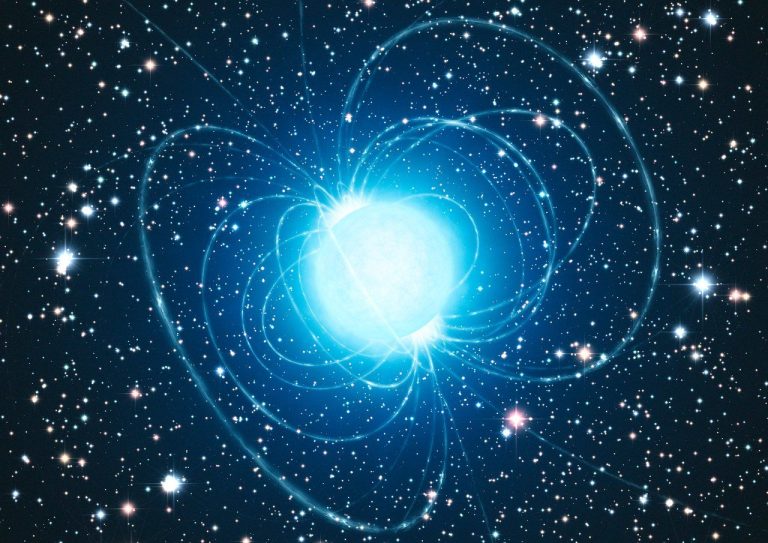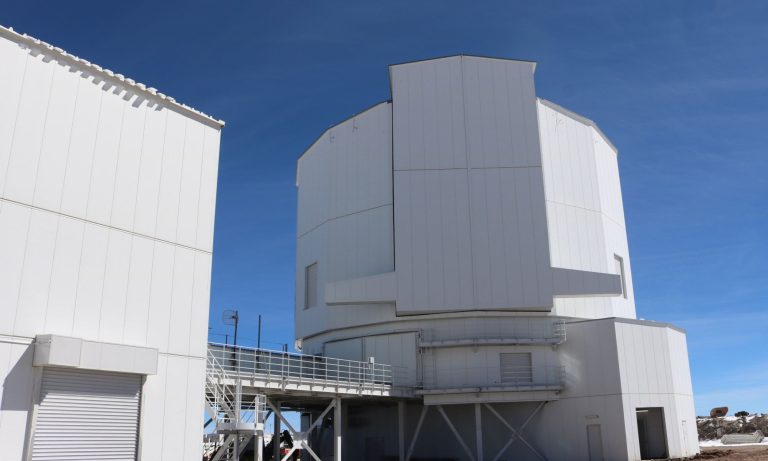Supernova Secrets: How ‘Rains’ Create Mysteriously Magnetic Dead Stars
A groundbreaking discovery has revealed that during a supernova explosion, not all material escapes into space. Some of this matter falls back onto the forming neutron star, boosting its spin and triggering a powerful magnetic dynamo. This process, explained by the Tayler-Spruit mechanism, offers critical insight into the formation of low-field magnetars, reshaping our understanding of stellar death and the evolution of magnetic fields in extreme environments.
Summary
- Discovery of Fallback Dynamics: Research indicates that fallback material plays a crucial role in the evolution of neutron star magnetism.
- Enhanced Spin Rates: The returning matter increases the rotation speed of the neutron star, akin to an ice skater pulling in their arms.
- Tayler-Spruit Dynamo Mechanism: This process converts the kinetic energy of the infalling plasma into magnetic energy, contributing to the star’s magnetic field.
- Contrasting Magnetar Types: The phenomenon helps differentiate between classical magnetars and low-field magnetars.
- Advanced Numerical Simulations: Modern computer simulations have allowed scientists to replicate these complex processes for the first time.
- Supernova Explosion Mechanics: A detailed look into how supernovae not only destroy stars but also give birth to some of the universe’s most extreme objects.
- Astrophysical Implications: The research deepens our understanding of the interplay between stellar collapse, rotation, and magnetism.
- Future Research Prospects: New research groups are forming to study these mechanisms in greater detail.
- Observational Advances: Improved telescopes and detection methods will help verify these findings.
- Significance for Cosmic Evolution: Insights from this study influence our broader understanding of how energy and matter evolve in the universe.

Main Article
The universe is filled with awe-inspiring events, and one of the most dramatic is the death of massive stars in spectacular supernova explosions. These cosmic events mark the end of a star’s life and the birth of exotic objects like neutron stars. Supernova explosions are not only violent displays of nature’s power but also the birthplace of phenomena that continue to mystify astrophysicists. When a star explodes, most of its outer layers are expelled, yet a fraction of this matter, known as fallback material, returns to the core. This process is key to understanding why some neutron stars exhibit unexpectedly lower magnetic fields, leading to the classification of low-field magnetars.
The Supernova Phenomenon
Supernovae occur when a massive star—one with at least ten times the mass of the Sun—reaches the end of its nuclear fuel. With no energy to counteract gravity, the core of the star collapses almost instantaneously. This sudden collapse generates shockwaves that propagate outward, ejecting the star’s outer layers into space. What remains is a proto-neutron star, a remnant only about 20 kilometers in diameter but with an incredibly high density. In these short, explosive moments, the foundation for the future magnetic field of the neutron star is set, influenced not only by the collapse itself but also by the material that eventually rains back onto it.
Understanding Neutron Stars and Magnetars
Neutron stars are some of the densest objects in the universe. Imagine compressing the mass of the Sun into a sphere roughly the size of a city. Their density is so extreme that even a teaspoon of neutron star material would weigh millions of tons on Earth. Among these remnants, a small group stands out: magnetars. Magnetars possess magnetic fields that can exceed those of ordinary neutron stars by several orders of magnitude. These fields are so powerful that they affect the surrounding space and can even trigger bursts of high-energy radiation. However, not all magnetars are created equal. Some, termed low-field magnetars, display magnetic fields that are much weaker than their classical counterparts. The mystery of how these differences arise has puzzled scientists for years.
The Role of Fallback Material
One of the most intriguing aspects of supernova explosions is the phenomenon of fallback. Not all material ejected during the explosion escapes into space. A portion of it is pulled back by the gravitational force of the newly formed neutron star. This fallback material carries angular momentum that can significantly increase the star’s rotation speed. In essence, as the material falls back, it acts like additional fuel for a dynamo, powering up the magnetic field generation process.
This mechanism is explained by the Tayler-Spruit dynamo, a theory that describes how differential rotation within the star can convert kinetic energy into magnetic energy. With this process at work, even a small amount of fallback can drastically alter the magnetic characteristics of the neutron star, leading to the formation of low-field magnetars. This discovery not only explains previously puzzling observations but also opens up new avenues for understanding stellar evolution.
Numerical Simulations and Theoretical Models
Recent advancements in computational astrophysics have allowed researchers to simulate these complex processes in unprecedented detail. By modeling the interaction between the fallback material and the neutron star’s interior, scientists have been able to reproduce the Tayler-Spruit dynamo mechanism. These simulations reveal that the distribution and amount of fallback material can determine the strength and configuration of the resulting magnetic field.
The role of numerical simulations in this research cannot be understated. They provide a virtual laboratory where conditions that are impossible to replicate on Earth can be studied in detail. These studies are instrumental in bridging the gap between theoretical models and observable phenomena in space.
Neutron Star Characteristics
Understanding the intrinsic properties of neutron stars is essential to appreciate the impact of fallback material on their magnetic fields. The table below summarizes some key characteristics of these stellar remnants:
| Characteristic | Description |
|---|---|
| Density | Extremely high; a teaspoon weighs millions of tons |
| Size | Roughly 20 kilometers in diameter |
| Magnetic Field | Ranges from moderate in low-field magnetars to extraordinarily high in classical magnetars |
| Rotation Speed | Can reach up to 700 rotations per second |
Magnetic Field Comparison
The differences in magnetic field strength between various types of neutron stars have long intrigued astronomers. The table below provides a comparative overview of classical magnetars and low-field magnetars:
| Type | Magnetic Field Strength | Notable Feature |
|---|---|---|
| Classical Magnetars | Extremely high, up to 10^15 Gauss | Capable of producing intense gamma-ray bursts |
| Low-Field Magnetars | Significantly lower, about 10 to 100 times weaker | Formed through subtle fallback dynamics |
Implications for Astrophysics
The realization that fallback material significantly influences a neutron star’s magnetic field has far-reaching implications. It challenges earlier notions that the magnetic properties of a neutron star are solely determined by the conditions during the supernova explosion. Instead, it emphasizes that post-supernova processes are equally crucial. This insight is transforming our understanding of stellar evolution and the lifecycle of massive stars.
Astrophysicists are now reconsidering how energy and momentum are redistributed during these colossal events. The interplay between stellar collapse and fallback creates conditions that are more dynamic than previously thought. These findings have also influenced how researchers interpret observational data from telescopes and satellites, as the magnetic field configuration of neutron stars affects the radiation they emit and their interaction with surrounding matter.
Future Directions in Research
The discoveries surrounding the fallback mechanism and the Tayler-Spruit dynamo have ignited new research initiatives. Institutions like Newcastle University are spearheading efforts to form specialized research groups that will explore the magnetic mysteries of neutron stars in greater detail. Future studies will expand on current simulations, integrate new observational data, and refine theoretical models. These advancements promise to reveal even more about the nature of supernova remnants and the magnetic forces that govern them.

Additional Perspectives and Ongoing Debates
While the fallback mechanism and dynamo theory offer compelling explanations, the astrophysics community continues to debate several aspects of these processes. Some scientists argue that other factors, such as the initial mass and rotation of the star, may also significantly affect the magnetic outcome. Others are focusing on how these magnetic fields influence the emission of high-energy radiation, such as gamma-rays and X-rays, which are critical for understanding cosmic phenomena.
Another important area of inquiry is the connection between neutron star magnetism and gravitational waves. As these dense objects interact and sometimes merge, they may generate ripples in spacetime. Understanding the magnetic properties of neutron stars could, therefore, contribute to the emerging field of gravitational wave astronomy.
The journey to decode the secrets of neutron stars is as fascinating as it is challenging. The study of fallback material and its role in powering the Tayler-Spruit dynamo has provided a crucial piece of the puzzle in explaining the diverse magnetic fields observed in neutron stars. From the violent dynamics of supernova explosions to the subtle interplay of fallback processes, every stage of a star’s death contributes to the birth of some of the universe’s most enigmatic objects.
This new perspective not only helps us understand low-field magnetars but also broadens our view of how matter behaves under extreme conditions. As research continues and new technologies emerge, we can look forward to even more astonishing discoveries that will further illuminate the complexities of our cosmos.
Fun Facts
- Neutron stars are so dense that if they were shrunk to the size of a city, their mass would rival that of the Sun.
- Magnetars are known to produce powerful bursts of high-energy radiation that can be detected from millions of light years away.
- Supernova remnants often evolve into intricate and colorful nebulae, creating some of the most visually stunning objects in space.
- Fallback material not only influences the magnetic field but also plays a role in determining the spin rate of neutron stars.



















